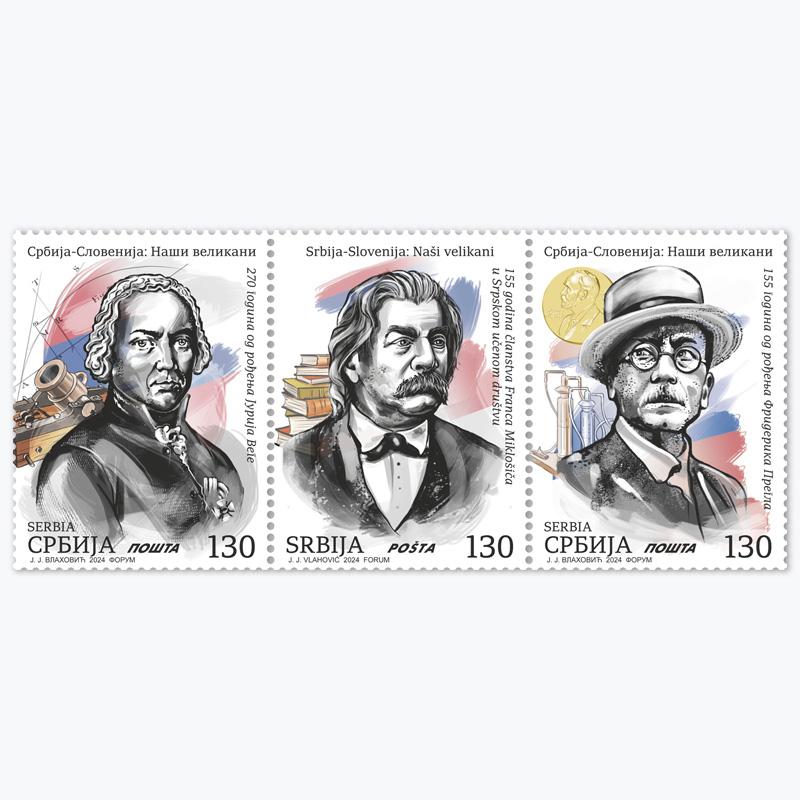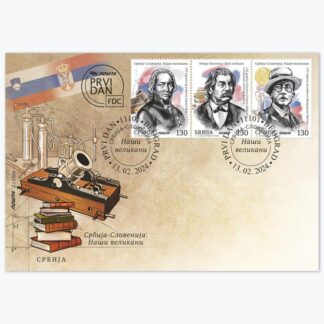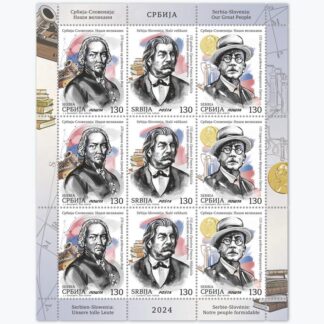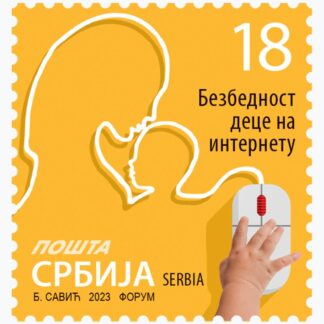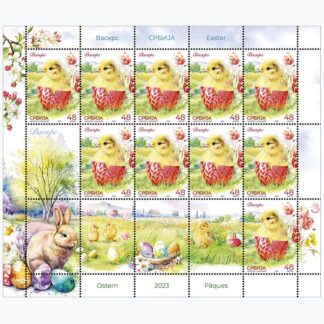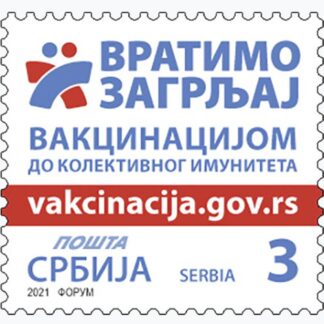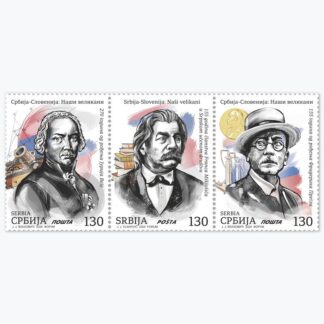Description
People of Serbia and Slovenia are united by their Slavic origins, close languages, cultures and common, shared history. The Republic of Serbia and the Republic of Slovenia have excellent bilateral relations, and cooperation in the fields of economy, science, culture, sports and education is at an exceptionally high level. This isuue acknowledges and underlines the role played by three great historical figures of Slovenia in the history of both Slovenia and Serbia.
Jurij Vega (March 23, 1754 - September 26, 1802) was a Slovenian mathematician and artillery officer. He will be remembered as a mathematician who broke the then world record for calculating the decimal of the number Pi (with 140 calculated decimals) and an engineer who regulated the flows of the Sava and Ljubljanica rivers. The Serbian people, however, will primarily remember him as a war hero who, in command of the artillery, liberated Belgrade from the Turks in 1788.
Franz Miklosich (November 29, 1813 - March 7, 1891) was a Slovenian philologist and linguist, a member of the Serbian Learned Society and later the Serbian Royal Academy. He left behind a large number of extremely important linguistic achievements for the Slovenian and Serbian languages. His “Comparative Grammar of Slavic Languages” and “Old Slavic-Greek-Latin Dictionary” are considered to be some of the most important works in this scientific field of that period. He was a signatory of the Vienna Literary Agreement (1850) and a recipient of the medal of Serbian Order of Saint Sava.
Friderik Pregl (September 3, 1869 - December 13, 1930) was a Slovenian chemist, winner of the Nobel Prize in Chemistry (1923), dean and vice-chancellor of the University of Graz. He received the Nobel Prize in Chemistry for his work in advancing quantum organic microanalysis. His method made possible to carry out this process with 50 times smaller amounts of material than before, thus openning the doors to research in many areas where it was difficult or impossible to obtain larger amounts of material for analysis.
Professional cooperation: “Svetozar Marković” University Library
Artistic realization of the issue: Jakša Vlahović, Academic Graphic Artist
